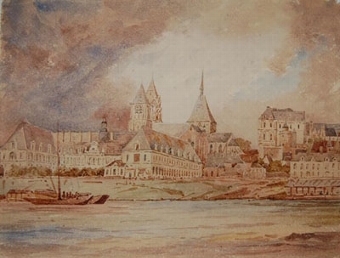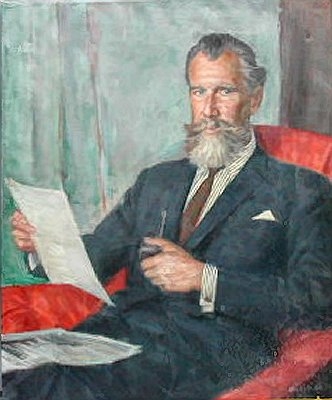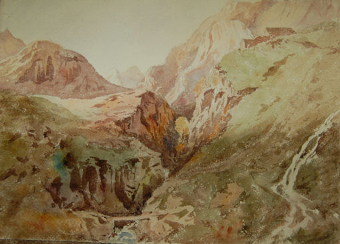featured item
the rope makers winding the rope with a rope walk beyond, 19th century
- View other items in:
- antiques interior design modern and vintage
- other interior design
artware ltd
Enquire about this antique
Artware Ltd has 565 antiques for sale.
click here to see them all
A rope is a length of fibres, twisted or braided together to improve strength for pulling and connecting. It has tensile strength but is too flexible to provide compressive strength (i.e. it can be used for pulling, but not pushing). Rope is thicker and stronger than similarly constructed cord, line, string, and twine.
In the Middle Ages (from the 13th to the 18th centuries), from the British Isles to Italy, ropes were constructed in so-called rope walks, very long buildings where strands the full length of the rope were spread out and then laid up or twisted together to form the rope. The cable length was thus set by the length of the available rope walk. This is related to the unit of length termed cable length. This allowed for long ropes of up to 300 yards long or longer to be made. These long ropes were necessary in shipping as short ropes would require splicing to make them long enough to use for sheets and halyards. The strongest form of splicing is the short splice, which doubles the diameter of the rope at the area of the splice, which would cause problems in running the line through pulleys. Any splices narrow enough to maintain smooth running would be unable to support the required weight. Leonardo da Vinci drew sketches of a concept for a ropemaking machine, but just like many other of his inventions, it was never built. Nevertheless, remarkable feats of construction were accomplished without advanced technology: In 1586, Domenico Fontana erected the 327 ton obelisk on Rome''s Saint Peter''s Square with a concerted effort of 900 men, 75 horses, and countless pulleys and meters of rope. By the late 18th century several working machines had been built and patented.
Some rope continues to be made from natural fibres such as coir and sisal, despite the dominance of synthetic fibres such as nylon and polypropylene which have become popular since the 1950s.
Antiques.co.uk Ref: 3949KEFM
- Materials:
- Oil on Canvas
- Width (cm):
- 51.00 x 61.00 (cm) 20.08 x 24.02 (ins)
Artware Ltd
Artware Fine Art specialises in fine antique, decorative and historical portraits and topographical pictures . We cover a period from the 17th and 18th centuries through to the 19th & 20th Centuries. We have over 150 portraits in stock, which can be viewed on our web site, each historical portrait has well researched biographical information both on the sitter and the artist.
Contact details
18 La gare
51 Surrey row
London
Greater London
SE1 0BZ
UNITED KINGDOM
T: 0207 921 97904
E: greg@artwarefineart.com
W: www.artwarefineart.com














